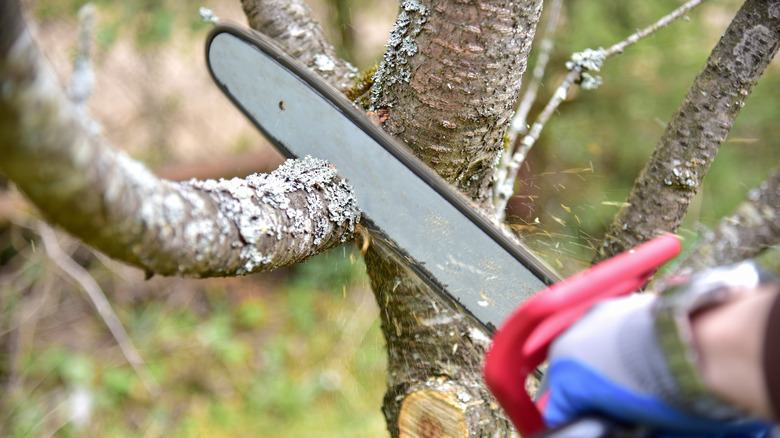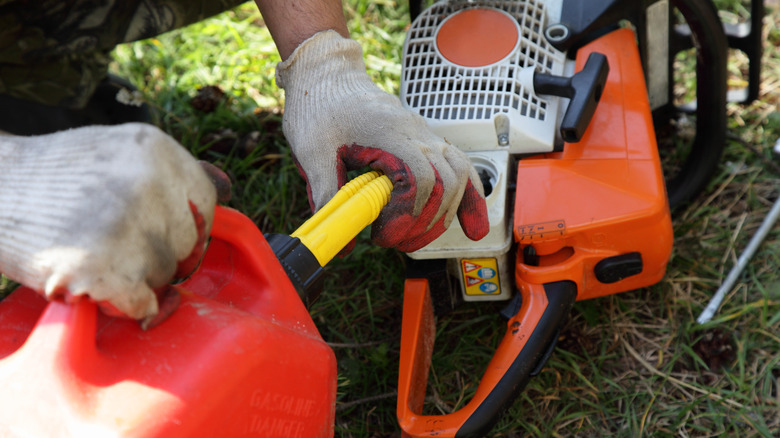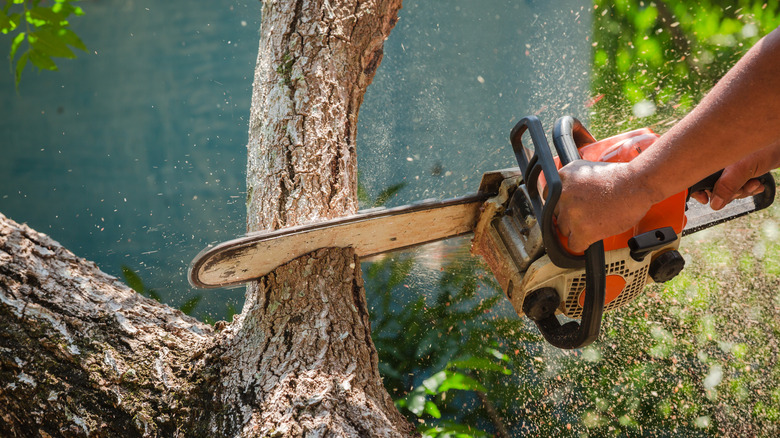How To Choose The Right Chainsaw For Firewood, Yard Work, And Gardening
Manual tools are suitable for some types of jobs, but when you have a big task at hand, you may want to rely on power tools. These are tools every homeowner should have, as they can save you from lost time and muscle fatigue while creating a higher level of precision in the work you can do. Many people rely on chainsaws as outdoor power tools. Whether you are cutting firewood, trimming trees, or removing volunteer trees from your garden, chainsaws make the job much easier. However, not all chainsaws are the same. Figuring out which design to purchase plays a crucial role in being able to use it successfully.
Selecting the right chainsaw depends on how you will use it. For example, choosing a battery-powered model has some advantages and disadvantages compared to fuel-powered models. The size of the cutting bar and the overall weight of the machine are also important considerations and play a role in helping you learn how to safely use the chainsaw. Maintenance requirements are important, too, such as the techniques required to properly sharpen the chainsaw's chain and keep it running in top condition. We'll discuss the key features of these outdoor power tools to help you determine which design will best fit your needs.
How to pick between electric and fuel-powered chainsaws
The primary difference among chainsaw designs involves the method of power they use. You can select chainsaws that run from electrical power (with a battery or electrical cord) or fuel (usually a gas-oil mixture). Typically, electric chainsaws are more cost-effective than gas-powered units and work especially well for smaller jobs, like trimming trees or cutting small-diameter firewood. They also tend to run quieter than a fuel-powered chainsaw, which can be helpful if you have neighbors nearby. Electric chainsaws are instant-start machines, meaning you don't have the frustration of trying to pull a starting cord and listening to the motor sputter repeatedly. Additionally, they typically weigh less than gas models, meaning you can work for longer periods of time with minimal muscle fatigue. However, if you have a large job on deck, understand that most batteries will exhaust their power in 30 to 60 minutes, meaning you may want a second battery on hand.
If you need to cut a lot of firewood of varying diameters, fuel-powered chainsaws will typically give you better results because they offer a greater range of power levels. You can select gas models made for small jobs, mid-range models, and those made for professionals who are cutting large trees. You also have fewer limitations with a gas chainsaw. If you are using a corded electric model, you are limited in how far you can be from an outlet, for example.
Selecting the right size of chainsaw for your needs
Once you decide whether an electric or a gas chainsaw is best for you, you can focus on the size of the machine. The guide bar length–the segment of the chainsaw extending from the engine and containing the spinning chain–is the key measurement when it comes to size. Longer guide bars can cut larger pieces of wood, but they also require more physical strength to control. Models with shorter guide bars weigh less than longer models and allow for more precise cuts.
Homeowners often use 12- or 14-inch guide bars for cutting small branches on occasion. However, those regularly cutting firewood will want 16-, 18-, or 20-inch guide bars, and models up to 36 inches are available for professionals who frequently cut down larger trees or branches. If you only want to use the chainsaw for simple pruning jobs, you could consider a mini design with a 4-, 6-, or 8-inch guide bar.
Pay attention to the cubic centimeters (cc) measurement for the chainsaw engine, too. A larger engine will have a measurement of 55cc or larger. A small engine may measure 30cc to 45cc, while an average-sized engine will measure 45cc to 55cc. Generally, models with larger guide bars will also have larger cc measurements. You'll need more engine power to handle trees and large-diameter firewood. A smaller engine works fine for trimming small tree branches. Keep in mind the general rule: larger engines make for a heavier chainsaw.


